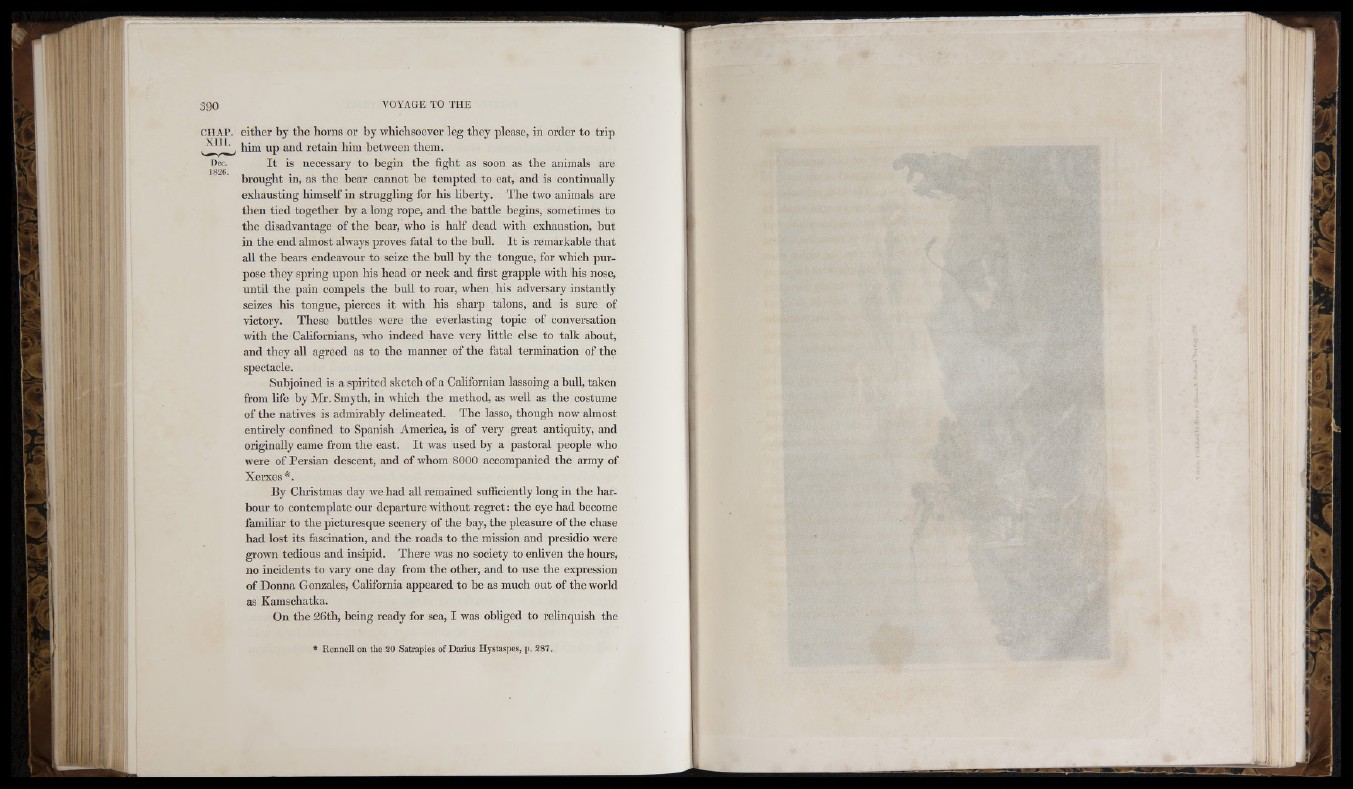
■■
Si
iiilY I! i
either by the horns or by whichsoever leg they please, in order to trip
, him up and retain him between them.
It is necessary to begin the fight as soon as the animals are
brought in, as the bear cannot he tempted to eat, and is continually
exhausting himself in struggling for his liberty. The two animals are
then tied together by a long rope, and the battle begins, sometimes to
the disadvantage of the bear, who is half dead with exhaustion, but
in the end almost always proves fatal to the bull. It is remarkable that
all the bears endeavour to seize the bull by the tongue, for which purpose
they spring upon his head or neck and first grapple with his nose,
until the pain compels the bull to roar, when his adversary instantly
seizes his tongue, pierces it with his sharp talons, and is sure of
victory. These battles were the everlasting topic of conversation
with the Californians, who indeed have very little else to talk about,
and they all agreed as to the manner of the fatal termination of the
spectacle.
Subjoined is a spirited sketch of a Californian lassoing a bull, taken
from life by Mr. Smyth, in which the method, as well as the costume
of the natives is admirably delineated. The lasso, though now’ almost
entirely confined to Spanish America, is of very great antiquity, and
originally came from the east. It was used by a pastoral people who
were of Persian descent, and of whom 8000 accompanied the army of
Xerxes *.
By Christmas day we had all remained sufficiently long in the harbour
to contemplate our departure without regret: the eye had become
famihar to the picturesque scenery of the bay, the pleasure of the chase
had lost its fascination, and the roads to the mission and presidio were
grown tedious and insipid. There was no society to enliven the hours,
no incidents to vary one day from the other, and to use the expression
of Donna Gonzales, California appeared to be as much out of the world
as Kamsehatka.
On the 26th, being ready for sea, I was obhged to relinquish the
• R en n e ll on th e 20 Satrapies of Da riu s Hystaspes, p. 287.
ti
. ¿ i l